FRONT OFFICE
Dayton Moore, General Manager—The Royals General Manager comes from the Atlanta Braves organization and is criticized by many Royals fans for not following the collective wisdom of the sabermetric community—until his teams start winning.
But even after two American League pennants and one World Series Championship I don’t recall any of Dayton’s critics publicly saying: “I was wrong, you knew what you were doing all along.”
Dayton’s calm public demeanor hides a very competitive nature.
In his book “More Than a Season” Dayton credits Jason Kendall with keeping him calm during games and if Jason Kendall—a guy who didn’t mind charging the mound occasionally – is calmer than Dayton Moore, I think it’s safe to say Dayton Moore has a very competitive nature.
The first time I see the Royals GM after reading his book I say: “Jesus, Kendall is keeping you calm?” and Dayton laughs so hard he almost chokes on a peanut.
J.J. Picollo, VP/Assistant General Manager—J.J. also comes to the Royals from the Atlanta Braves. Friendly and knowledgeable, a conversation with J.J. is always well worth the time.
I’m 99% sure I get more out of them than he does.
Jin Wong, Assistant General Manager/Baseball Administration—In 1996 Jin was a Division III All-American baseball player. In 2015 Jin assists Dayton Moore when it comes to contract negotiations, salary arbitration and roster management.
COACHING STAFF
Ned Yost, Manager—Critics contend Ned is a bad manager and the snarky term “Yosted” is internet shorthand for a Ned Yost managing move that backfires.
On the other hand, Ned has more wins than any other Royals manager, will go on to win a World Series and enter the Royals Hall of Fame so he’s clearly doing something right, although Dayton deserves at least some of the credit, because as Ned once told me:
“I’m a lot smarter when I have a good bullpen.”
Ned’s biggest managing strength—his willingness to let coaches and players make decisions—goes largely unappreciated.
Don Wakamatsu, Bench Coach—Bench coaches are there to provide a sounding board for the manager. They make suggestions and try to slow the game down for their boss; the manager might be thinking about what’s happening right now this minute, a bench coach might be thinking two innings ahead. If the manager goes to the bathroom the typical bench coach stands outside and talks to him through the door.
Watching the Royals dugout it appears that Wakamatsu and Ned don’t communicate all that often.
The media doesn’t really understand what Wakamatsu is or isn’t doing, but his lineup cards are works of art which is an easy story that gets reported repeatedly. When a columnist is writing a profile of Wakamatsu and asks me what I think Don has brought to the team, I say: “Calligraphy.”
Pedro Grifol, Catching Coach—Grifol is the Royals catching coach and before that served as the Royals hitting coach. Pedro is often seen conferring with Ned Yost during games and at least from the outside appears to have worked his way into being the de facto bench coach.
Dale Sveum, Hitting Coach—Dale becomes the Royals hitting coach when Grifol changes jobs. Sveum is described as a guy not afraid to get in a player’s face, something not every coach is willing to do.
Dale turns the Royals hitters loose; he doesn’t ask them to work walks, he takes advantage of their naturally aggressive nature and lets them swing the bat.
Despite his importance Sveum does not get a lot of media attention, possibly because he always seems busy and vaguely pissed off and we’re afraid to talk to him, but Sveum is one of the architects of the 2015 Kansas City Royals winning philosophy.
Dave Eiland, Pitching Coach—An intense, no-nonsense guy who doesn’t mind talking pitching if you have an intelligent question to ask; which means he doesn’t spend a lot of time talking to the media.
Mike Jirschele, Third Base Coach—Mike spent years managing in the minors before making it to the Big Leagues and has a special relationship with many of the Royals players: Jirsch is the guy they played for in Triple A.
Mike was questioned for his decision to stop Alex Gordon at third base in Game 7 of the 2014 World Series, but will become a base-coaching hero in 2015.
Rusty Kuntz, First Base Coach—Eric Hosmer calls Rusty the “King of the Base Paths” because Rusty spends hours watching video and finding base-stealing keys on pitchers (more about that in the near future) that allow the Royals to swipe bases when other teams can’t. Rusty loves to talk baseball and is a media favorite.
I talk to Rusty so often I should pay part of his salary—but won’t.
Jason Kendall, Special Assignment Coach—When I ask Jason what “Special Assignment Coach” means, he says: “I don’t know…Team Bully?”
Me: “That would look awesome on a business card.”
Kendall helps with the catchers and hits grounders to infielders during batting practice, but Dayton Moore also uses Jason as a trouble-shooter and enforcer. Kendall is incredibly blunt and honest and isn’t afraid to air out a player when it’s called for. Players (and reporters) are intimidated by Kendall and his Bad Ass Vibe.
If a situation needs to be cleaned up, Jason’s often the guy who does it.
Doug Henry, Bullpen Coach—After a successful big league career as a relief pitcher, Doug is now the adult in charge of the bullpen. Someone has to answer the phone, make sure the right guys are getting loose at the right time and prepare the pitchers for the situation they’re about to step into—Doug’s that guy.
POSITION PLAYERS
Alcides Escobar, Shortstop—During the 2015 season Esky is known for two things: terrific defense and swinging at the first pitch of a game. That first-pitch aggressiveness epitomizes the Royals philosophy; unlike a lot of other teams, the Royals are not going to stand at the plate and watch hittable fastballs go by.
In 2015 Esky makes the All-Star team, becomes the American League Championship Series MVP, wins a Gold Glove and hits .364 when he puts the first pitch in play.
Eric Hosmer, First Baseman—Hosmer makes everyone else on the Royals infield better. His footwork around the bag and ability to stretch for throws and handle bad hops saves his teammates error after error. Hosmer allows the other infielders to attempt plays they wouldn’t try with Billy Butler at first base.
In 2015 Hosmer hits .297, slugs .459, wins a Gold Glove and solidifies his position as team leader.
Mike Moustakas, Third Baseman—Moose and Hos are close; so close that in 2011 the veterans on the team make them dress as the Ambiguously Gay Duo on Rookie Dress-Up Day.
On the last road trip of the year rookies have to dress in embarrassing costumes selected by the veterans. The rookies have to ride to the airport in those costumes, walk through the airport in those costumes, fly in those costumes, walk through the next airport in those costumes and then get kicked off the team bus a few blocks from their hotel in those costumes and finish the trip by walking down the street in some strange city dressed as a Fairy Princess or Tarzan or 50% of the Ambiguously Gay Duo.
Moose tells me he was just glad he wasn’t asked to dress as a clown, because Mike hates clowns.
More importantly, Moose becomes a more complete hitter and goes from hitting .212 in 2014 to .284 in 2015 and makes the All-Star team.
Omar Infante, Second Baseman—At times Infante appears to just be going through the motions, but when he puts his mind to it, Omar can deliver some very professional at bats. Infante gets hurt late in 2015 and ends the season hitting .220.
Ben Zobrist, Utility Player—Zobrist does a little of everything and after Infante’s injury, eventually settles in at second base.
Ben’s normally quiet, but when two reporters talk gleefully about the soft-serve ice cream machine and nacho cheese dispenser we have in the press box—two additions that came once the Royals start winning—Ben asks:
“Is there anything else we can do for you guys?”
My pleas for a margarita machine go unanswered.
Salvador Perez, Catcher—Salvador Perez has incredible physical talent and his ability to throw a baseball quickly and accurately keeps a lot of base runners from attempting a steal. Since most of us assume a guy who throws out base runners is a good catcher, some of Salvy’s pitch-calling flies under the radar.
Nevertheless, in 2015 Salvador Perez makes the All-Star team, wins a Gold Glove and is named the World Series MVP.
Drew Butera, Catcher—Drew might have the best job in baseball: backing up Salvador Perez. In 2015 Drew appears in 45 games for the Royals; which means I could have been Sal’s back up in 117 games and nobody would have noticed. Since Ned Yost plays Perez a lot, Drew mainly has to help out with the pitchers when they warm up and throw side sessions.
But Drew’s behind the plate and catches the last pitch thrown in the 2015 World Series.
Kendrys Morales, Designated Hitter—In 2014 Billy Butler hit .271, 9 home runs and had 66 RBIs; a down year. Billy does not run, catch or throw a baseball well; his one Big League skill is hitting and that skill seems to be declining. So when the Oakland A’s offer Billy a surprising $30 million for three years, the Royals wave goodbye and sign Kendrys Morales—a signing many Royals fans hate at the time.
In 2015 Billy Butler hit .251, had 15 home runs, drove in 65 runs for the Oakland A’s and in 2016 gets punched out by teammate Danny Valencia; in 2015 Kendrys Morales hit .290, had 22 home runs and drove in 106 for the Kansas City Royals.
Morales did it for a lot less money than Butler got in Oakland and nobody wanted to punch him.
Alex Gordon, Left Fielder—Alex runs great outfield routes; he tries to field every ball while charging back toward the infield. This attention to detail turns a lot of doubles into singles and his throwing arm prevents a lot of baserunners from taking an extra 90 feet.
It’s difficult to measure things that don’t happen, but with Gordon in left field, a lot of bad things don’t happen. Gordon is quiet and considered the ultimate “lead by example” guy.
Back when Gordon struggled, people who didn’t know him interpreted Gordon’s calm demeanor as not caring, once he start playing well people interpret that same calm demeanor as professionalism.
Lorenzo Cain, Center Fielder—Lorenzo covers a ton of ground in centerfield; his strides are so long they eventually widen the warning track in Kauffman Stadium so Cain will get an earlier indication of when he’s about to hit the wall. Cain, Gordon and Jarrod Dyson show no fear of making a play up against the fence.
Cain hits .307 in 2015 and when I compliment him on laying off sliders away—a pitch he chased on numerous occasions in previous years—Lorenzo says thanks, but then laughs and admits if someone throws him a really good slider, he’ll still chase it.
Alex Rios, Right Fielder—Rios is known as an “easy runner”—a guy who looks like he’s loafing, even when he’s going all out. He does not appear to have the same willingness to challenge the wall as his teammates and might have a good reason.
In 2015 Alex is playing right field when a ball is hit into foul territory. He runs over to the right field wall, the ball caroms off the padding and Rios goes down like he’s shot. In the press box we speculate about his injury: did Rios jam his knee into the wall?
Did he catch his foot under the outfield wall pads?
My first clue about what actually happened comes when I see Lorenzo Cain doubled over in laughter in centerfield; the ball bounced off the wall and hit Alex square in the nuts.
A variety of more serious health issues—a broken hand and the chicken pox—keeps Rios from getting into any kind of offensive rhythm.
Paulo Orlando, Outfielder—In 2015 Paulo was often used as a defensive replacement for Alex Rios; once Rios has his last at bat, Orlando comes in as a defensive upgrade.
When we’re talking about the fastest players on the team—AKA the “burners”—Rusty Kuntz says it depends on how far the players are running: if it’s first-to-second it’s Jarrod Dyson or Terrance Gore, but if it’s first-to-home it’s Paulo Orlando, which makes sense: Paulo’s 6-2 and once he gets going has longer strides, Jarrod’s 5-9 and Terrance isn’t tall enough to go on carnival rides.
Jarrod Dyson, Outfielder—Jarrod Dyson pulls off something extremely difficult; he’s not a regular starter, but he’s still a clubhouse ringleader.
Dyson throws verbal jabs at everyone, including reporters. Kansas City Star beat writer Andy McCullough wears horn-rim glasses, so when Andy’s standing there with a notebook in hand, Jarrod asks if “Harry Potter” has a question.
In my case Jarrod knows I’ve written a book with Jason Kendall, so he wants to know where his share of the money is: “You talk to us all the time, we helped write that book.” I tell him Kendall has his share of the money and Jarrod should go ask Jason for it and see how far he gets.
I don’t hear any more complaints after that.
OK, a couple more Dyson stories because there are a million of them and he’s one of my favorite players:
The Royals are running a series of videos on their scoreboard during games; they feature players talking about drawings kids have done for them. The videos use subtitles for the Latin guys, but when Jarrod’s video’s shown, his Mississippi accent is so thick his video also has subtitles—his teammates go into hysterics.
During the playoffs new reporters show up and some of them mistake a visitor to the clubhouse for Jarrod (it’s a relation of Dyson’s who made the mistake of sitting in Jarrod’s chair) so the reporters gather around the wrong guy and start asking questions. Lorenzo Cain bursts out laughing and tells the reporters to go ahead and interview the guy because he had just as many hits as Dyson did.
When Dyson gets injured Rusty Kuntz tells me they miss his energy on and off the field. Rusty explains some guys are fountains and some guys are drains and Dyson’s a fountain that keeps things hopping in the clubhouse.
Terrance Gore, Pinch Runner—If there’s anyone on the team faster than Dyson, it might be Gore, but running is just about all Gore gets to do at the Big League level.
Before a game in the 2014 World Series, Dayton Moore and I are sitting on the Royals bench while Terrance is coming down the dugout steps. A fan asks for Gore’s autograph, throws him a ball—which Gore drops—and throws him a pen—which Gore drops.
With a straight face Dayton looks at me and says: “That’s why he doesn’t play defense.”
On the upside, I’ve seen Gore score from second base on a ball that never left the infield. That kind of speed puts incredible pressure on the opposition defense and the Royals will use that pressure to win a World Series.
OK, Substack is warning me that this post is getting too long for email so no more pictures, you’ll just have to remember what these guys looked like.
PITCHERS
Yordano Ventura—Ventura throws a 100-MPH fastball and devastating off-speed stuff, but the questions about him concern his makeup. At first, reporters call Yordano “unflappable,” but that’s inaccurate. During the season several on-field blow ups will have the Royals worried about Yordano’s composure.
Danny Duffy—Danny has electric stuff, but doesn’t always know where it’s going. Danny’s incredibly likeable, open and honest and after one rough outing describes himself as “a dumpster fire.”
Edinson Volquez—Eddie’s a 10-year veteran and there was some thought he’ll be a mentor to Yordano Ventura and help keep him calm and if that’s the plan it has mixed results.
Jeremy Guthrie—Guthrie is another veteran pitcher, but finishes 2015 with a regular season 5.95 ERA and won’t pitch in the postseason.
Jason Vargas—Jason went 5-2, put up a 3.98 ERA, but only threw 43 innings before injuring his arm. Vargas does not go out of his way to talk to members of the media, but if you have a serious question about pitching, he doesn’t mind answering.
Chris Young—Chris Young is A.) six feet, ten inches tall and B.) attended Princeton University and C.) is one of the smartest pitchers to ever stand on a pitching mound.
Young also has a fastball that usually tops out in the high eighties, but still finishes the 2015 season with an 11-6 record and a 3.06 ERA. Considered an add-on in spring training, before the 2015 season is over Chris Young will bail out the Royals on numerous occasions.
Johnny Cueto—Cueto comes over from the Reds in mid-season and proves to be an enigma; he pitches one game and looks horrible, pitches another and looks like an ace.
Fortunately for the Royals, Cueto comes up big when it counts.
Brandon Finnegan—After the end of the 2014 Royals season, Jason Kendall predicts the 2015 Royals will go one of two ways: they’ll enjoy themselves too much in the off-season and be satisfied to be American League Champs or they’ll realize just how close they came to a World Series ring and come back hungrier than ever.
In 2015 the first picture I see from spring training shows Brandon Finnegan; he spent part of the winter getting a full-sleeve tattoo and appears to have shown up at spring training out of shape.
He’ll be traded to Cincinnati when the Royals acquire Cueto.
Luke Hochevar—People (and that definitely includes me) pull for Luke Hochevar. He took a lot of criticism when the team was scuffling, found a role in the bullpen and then injured his arm. Luke did not pitch in 2014; it was like being invited to a great party, but told not to eat or drink anything—in 2014 all Luke could do was watch.
In 2015 Luke works his way back into the Royals bullpen and is the winning pitcher in the final game of the 2015 World Series.
Ryan Madson—Madson is another of the Dayton Moore signings that didn’t get much attention at first, but plays an important role for the 2015 Royals.
Joe Blanton—Put Blanton on the list of Dayton Moore barely-noticed add-on signings that turn out to be important. Blanton went 2-2 for the Royals with a 3.89 ERA in 41 and 2/3rds innings pitched, but the most interesting thing I hear about Joe is a rumor that he’s living in an RV parked at Worlds of Fun, an amusement park near Kauffman Stadium.
Which—if you’re a middle reliever who gets traded a lot—is brilliant: buy an RV and live in a parking lot.
Before I can confirm the rumor, Joe’s traded to the Pittsburgh Pirates and probably drove his RV to get there.
Kelvin Herrera—Herrera is used mainly as a set-up guy, but Kelvin would be the closer on a lot of other teams.
Greg Holland—Holland has been one of the best closers in the game for several years, but in 2015 the wear and tear on his arm catches up to him. Despite a drop in velocity, Holland pitches with an injured arm and still saves 32 games.
Wade Davis—Wade took over the closer’s role and finishes the regular season with an ERA of 0.94. In 2014 Wade’s so dominant a coach from another team tells me he felt like his team won because they managed to get a hit off Wade.
In 2015 Wade’s even better.
Next up: THE PRESEASON


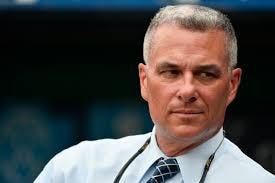



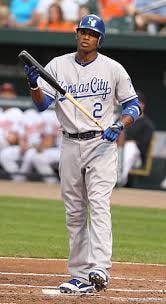

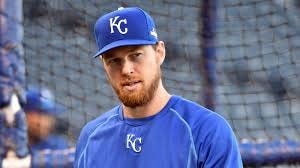
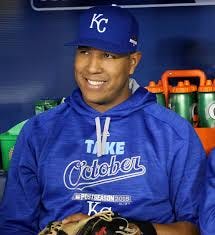
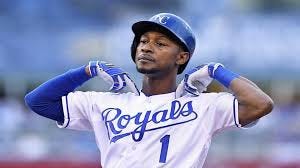
Waiting for more
This is gonna be good. Can't wait for more.